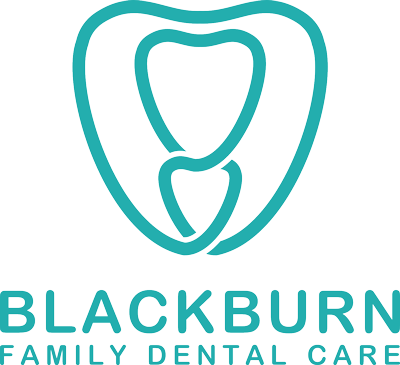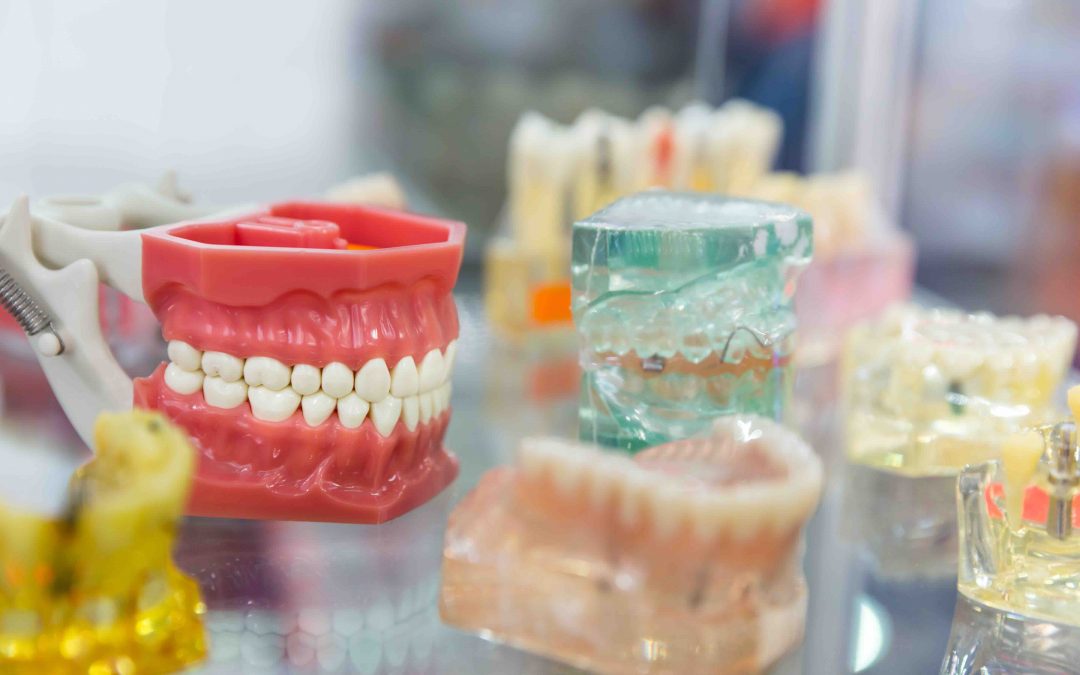The use of dentures is not a recent modern dental practice. In fact, the first recorded set of dentures go as far back as 700 BC, when the Italians of the day, the Etruscans, made them out of animal or human teeth. These were not the sturdiest of dental treatments. Fortunately for us, with modern day advancements, we no longer need to hunt animals for artificial teeth, as we have moved along way with new advancements. In the 1950s, Per Ingvar Branemark accidently discovered that the human bone had the ability to attach to certain metals, namely titanium. The dental implant was thus born. Cosmetic dental implants or “dental implants” have evolved throughout the years, with companies researching and improving implant surfaces.
Currently the options of replacing a missing tooth or gap are dentures; dental bridges; or implant. In this blog, we focus on instances where the dental bridge is not suitable or cannot be done. Here we focus on the differences between the dental implant and the dentures, and whether there is any overlap.
Understanding the difference between implants and dentures is important when you are discussing the various options with your denture clinic in Melbourne. In the past, the choices may have been limited to removal of teeth and having dentures fitted, but today, the possibility of combining dentures with implants is also an option. Dental clinics aim to retain that natural look and feel to your teeth. Let’s start by reviewing what makes an implant different to dentures.
What are dental implants?
A dental implant is a metallic screw that is surgically placed in the jaw bone. It is usually made from titanium, on top of which an artificial prosthesis or crown is attached (most people know this as the dental implant). The screw part of the implant is fixed into the jawbone and in effect, it takes the place of the root of a tooth.
The steps of a dental implant are normally staged, to ensure the root portion has integrated successfully to the bone. What this means is that after the necessary scans are reviewed by your dentist, and that the implant site has been deemed suitable, the dentist will surgically place the titanium fixture into the bone during the first implant surgery. The implant is mechanically placed in to the jaw bones, however, on a cellular level, there is no union at the time of surgery. The implant is allowed then to heal and integrate which can take 3 to 6 months, depending on whether additional bone grafting is required.
The second stage implant involves a second appointment after the healing phase, to check if there is sufficient union between the titanium surface of the implant and your bone. This is done before embarking on the next step of restoring the root form with either an implant crown, bridge or denture. It is important that the dentist checks for bony union (osseointegration) to ensure the dental implant can sustain the bite and chewing forces. All these staged procedures can be carried out at our clinic at Blackburn Family Dental Care, utilising a local anaesthetic, the same kind that is used for a simple filling.
What are dentures?
Dentures on the other hand are colloquially known as “false teeth”, they are often made of acrylic, valplast or cobalt chrome metals depending on the type of denture. Dentures are always removable. If you are missing teeth in a particular area or “arch” of the mouth, your dentist may give you the option of replacing them with a removable partial dentures or full dentures.
These two options normally have support from your teeth and gums, usually held in place during normal speech and chewing by metallic clips, which engage the natural undercuts of teeth if there are any left. In cases where there are no teeth present, we often call this a “full denture”, the upper dentures are usually retained by “suction” of the denture to the shape of the upper jaw. In the case of a lower full denture for a lower jaw without teeth, there is less retention and it relies on a balance in forces from cheek, tongue and lips. This can pose a problem, especially if the teeth have been lost for long extended periods of time because the mandibular bone which normally lends support, reduces in size and shape (sometimes until it’s non-existent!). Normal chewing forces that once stimulated the bone through the previous teeth are no longer there when the teeth and roots are gone, and so the lower full denture usually has a problem with retention. Luckily, with the advancement of implants, implants can be placed to create attachments where lower dentures can directly attach onto the implants through clips or magnets.
What’s the difference between the two?
Dental implants are permanently fixed into the jawbone, however, there is a wide array of restorative options (what you can attach on top of the fixture or metallic screw). For the purpose of the discussion on differences, we will compare a dental implant that has a crown attached onto it, as this is what most people know dental implants to be. If a crown is placed onto the root fixture, they closely imitate your natural tooth, so that when eating or speaking, you don’t need to worry about issues of “loose dentures”. In such cases, you also do not need to worry about acrylic covering the palate and affecting pronunciation of certain sounds!
Now, we will discuss tooth or gum borne dentures. This by definition, is the traditional dentures which sit on either your teeth or gum or both. During eating, denture wearers have to be particularly careful about the type of food they bite, certain foods cannot be chewed efficiently (e.g. steaks, and other harder and more robust foods). Certainly, sticky foods can also pose a problem, remembering that a lot of the retention is relatively weak, coming from the bulbosity of the existing teeth or the shape of the palate or jaws, in the case of people with no teeth. Dentures have been also known to “rock” or “loosen” when the person is speaking especially ones that have been worn for a long time. This can be a little embarrassing during social events. As the individual gets older, the gums and bone remodel, the bone shrinks and changes shape, and this in turn, causes a mismatch in fit as the original dentures were designed according to a mould of the bone shape at the time it was made. The result is a very inadequate fit, causing problems with stability during speech and chewing. For this same reason, the height and thickness of an old denture may not be able to restore lost facial height and volume (which are natural aging processes). A person with old dentures will look older for this same reason.
Plus, the use of dental adhesive or lining materials bought over the chemist that are used to improve retention, can be a slightly messy process and can cause an irritation to the gums, if left for too long.
*Note that implants can also be placed in your jaws to increase or improve the stability and retention of dentures. Previously we have discussed about tooth or gum borne dentures, yet there are also dentures that are implant supported. This is very similar to your normal dentures; however, retention is enhanced by a surgically placed dental implant in the patient’s jaws. Often a clip or a connector is permanently fixed onto the dental implant, this then allows a removable but stronger connection to the denture. In this instance, the implant is fixed to the jaw bones, but the dentures can still be removed. Such a combination (implant retained denture) is suitable where the patient has lost all teeth from the lower jaws, and their current bone has resorbed or “shrunken” to a level where it no longer can offer support or retention for a “tooth/gum borne” denture.
Switching to dental implants
Have you had an old denture, but it seems to have problems in retention? When you are chewing foods or talking, it seems to loosen or rock on one side? As a stand-alone option, a dental implant can actually assist greatly in tooth replacement.
A dental implant that is readily attached to crowns and bridges, can be an effective way to mimic lost teeth. Once the dental implants are in, patients have reported that the have forgotten about it or that it’s there, as they feel very similar to natural teeth.
A dental implant to retain an existing denture is also possible. A pre-existing denture may be modified to connect to dental implants recently placed.
Here are some more frequently asked questions:
Q1: I have way too many gaps and the gaps are large, and the cost of doing individual or implant bridges is way too costly, what are my options?
We can do a combination of implants and dentures. The implants can be placed in strategic areas to improve the retention, for a more economical denture to replace the other missing gaps. This has two advantages:
- Having fewer implants means reducing cost to replace teeth, the denture acts to replace the other gaps.
- The implant will greatly improve the retention of the denture (case by case basis).
Q2: I have many gaps, and finance is not an issue – what are my options?
After thorough examination of the existing condition of your teeth and gums, the dentist will assess a specialised x-ray called a CBCT to give you a plan on the optimum number of implants for function. This might include single teeth implants; implant bridges; or a combination of single crown implants with implant supported bridges.
Q3: I don’t have any of my teeth. What are my options?
The dentist will offer you the following options to choose from:
- Full dentures: This is the most economical option and is gum borne, it obtains retention from the shape of the palate and bony ridges.
- Implant retained dentures: This is where both implants and dentures are used. it is for patients who find a normal denture too loose and would like something with a bit more retention.
- Implant supported bridges: Also, colloquially known as “All on 6” or “All on 4”. this is where 4 to 6 and sometimes more implants are placed in the jaws, and a rigid fixed prosthesis (bridge) is attached and splinted to the implants. In this option, the bridge mimics the natural teeth, it is fixed, and there is no plastic flange covering the palate like the previous option.
The choices are there to help put the smile back on your face – so contact your trusted dentist with over 60 years of experience, Blackburn Family Dental Care for an assessment of your needs.

